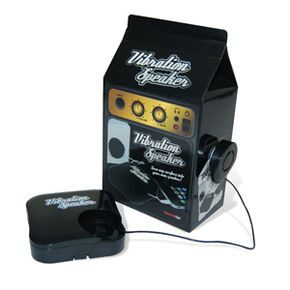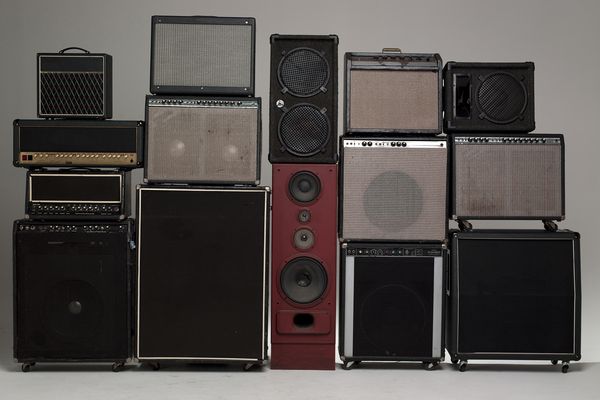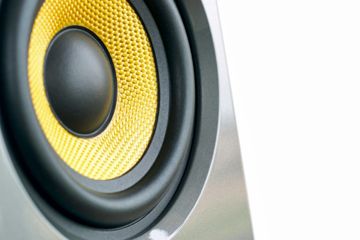A typical speaker has several parts. The parts you can see without opening up a speaker are the suspension, the diaphragm and the dust cap. The suspension acts as a frame for the diaphragm. The diaphragm looks like a simple cone with the dust cap in the center. The dust cap covers a piece called the voice coil.
The voice coil is a movable piece within the speaker. It's also an electromagnet. Passing current through the coil creates a magnetic field. Reversing the current switches the polarity of that magnetic field. At the base of the speaker is a permanent magnet. When the polarity of the magnetic field of the coil matches that of the permanent magnet, the two like fields repel one another and the coil moves outward, pushing the diaphragm. When the magnetic forces are opposite one another, they attract each other. This pulls the coil inward, pulling on the diaphragm.
Alternating the electricity flowing through the coil will cause the coil to move up and down quickly. This makes the diaphragm move, which in turn causes the air pressure to change. The movements of the molecules in the air provide the sound we hear. An amplifier provides the changes in electricity to make the diaphragm move in such a way that it reproduces the right sounds.
A vibration speaker is similar, except that there's no diaphragm. Instead, the voice coil attaches to a movable plate. Setting a vibration speaker down on a solid surface positions the plate so that it will vibrate against that surface. As current alternates in the coil, it moves up and down, pushing against the movable plate. The plate pushes against the surface, transferring the energy to the surface and turning it into a speaker. Because vibration speakers convert electrical energy into mechanical energy, they are also known as transducers. A transducer is a device that can convert one form of energy into another.
The solid surface will vibrate with the speaker, displacing air molecules around it. Just as with any other sound, your ear detects the movements of the colliding air molecules. Some materials reverberate better than others -- not all solids are created equal. In general, glass and wood tend to work best with vibration speakers. You can even mount vibration speakers on the inside of a wall, leaving the speakers invisible to those in the room. Because the speakers transfer vibrations to the surfaces you mount them on, the wall itself will send out sound.
Manufacturers have found clever ways to incorporate vibration speakers into various products. One company creates vibration speakers that you can mount on a ski helmet, letting you listen to music as you hit the slopes. Others design speakers that you can mount on the underside of desks or tables, giving you a full surface to work with without the clutter of visible speakers. And then there are bone-conduction speakers, which transfer vibrations directly to your skull so that you both hear and feel the music at the same time!



